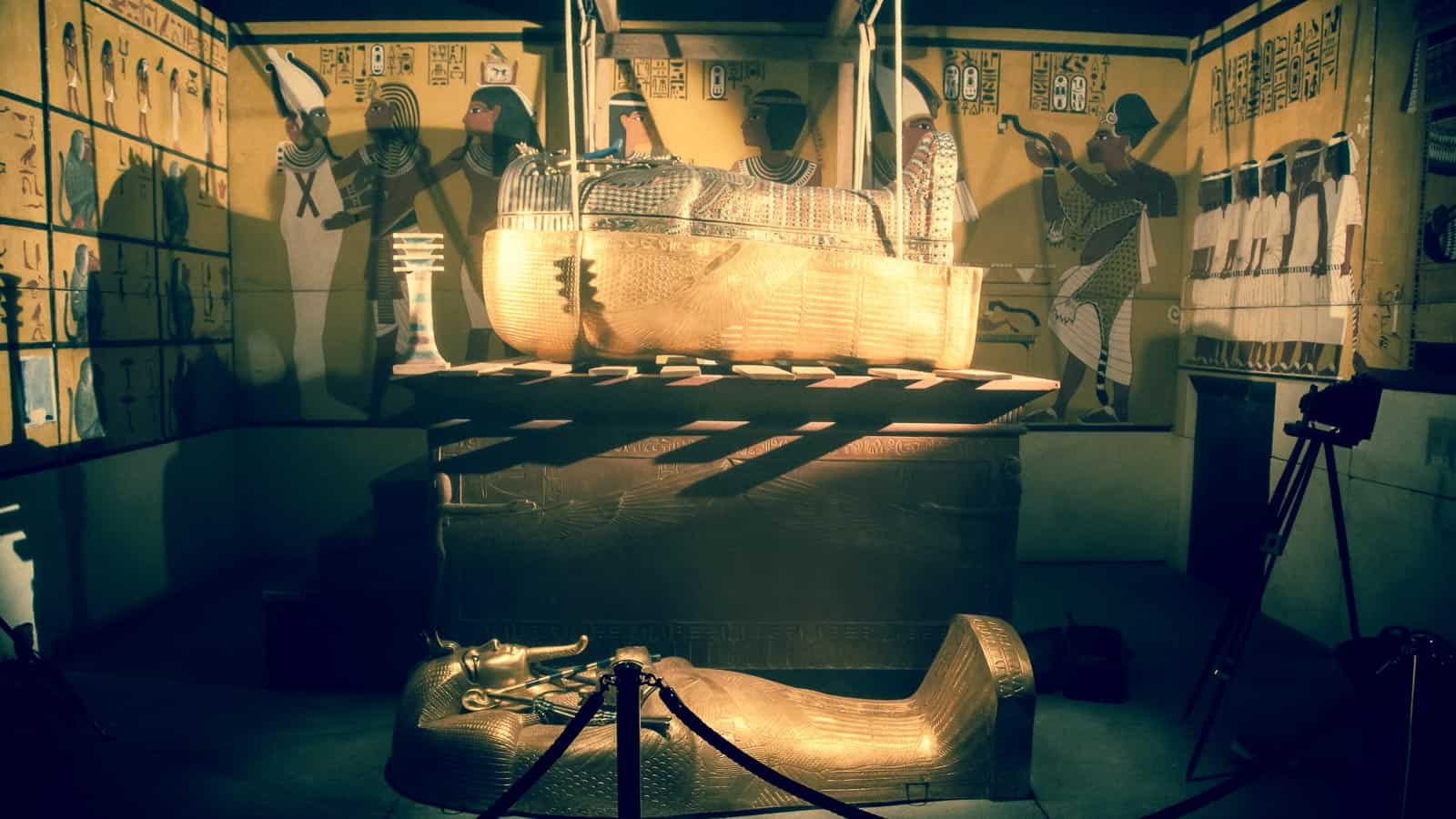Inside Tutankhamun: five thousand artifacts that changed how we preserve the past
When Howard Carter uncovered Tutankhamun’s tomb in 1922, he not only found over five thousand artifacts but transformed archaeology into a science of preservation and wonder.
In the autumn of 1922, the sands of Egypt gave up one of history’s most astonishing secrets. Deep in the Valley of the Kings, the British archaeologist Howard Carter uncovered the tomb of the boy pharaoh Tutankhamun. The discovery not only changed the field of archaeology forever but also reignited global fascination with ancient Egypt.
A Search Fueled by Determination
Howard Carter had spent years excavating in the Valley of the Kings, convinced that an undiscovered royal tomb still lay hidden beneath the desert floor. Many experts believed the area was exhausted and had yielded all its treasures. Carter disagreed. His belief was based on small but persistent clues—fragments of items bearing Tutankhamun’s name and records suggesting that the young ruler’s burial site had never been found.
After five long seasons of excavation funded by Lord Carnarvon, Carter’s persistence finally paid off. On November 4, 1922, his team uncovered a step cut into the limestone. Beneath layers of rubble, they soon revealed a staircase leading to a sealed doorway marked with royal insignia. Carter knew instantly that he had found something extraordinary.
A Doorway to History

When the team broke through the plastered entrance and peered inside, they saw glints of gold in the flickering light. The passageway led to a set of chambers untouched for over three thousand years. The tomb was not vast compared to others in the valley, but what it lacked in size, it made up for in preservation and splendor.
Within the outer chambers, they found thousands of objects—carved furniture, inlaid jewelry, alabaster jars, ceremonial chariots, and statues of deities meant to protect the young king in the afterlife. In the burial chamber, nested within a series of gilded shrines, rested a solid gold coffin containing the mummified remains of Tutankhamun himself.
Why Tutankhamun’s Tomb Was Different
Most royal tombs in the Valley of the Kings had been plundered centuries earlier, often within decades of their construction. Tutankhamun’s tomb was a rare exception. Its small, almost modest entrance was partly hidden beneath the debris of another tomb, which likely spared it from looters. This accidental concealment gave the world an unprecedented glimpse into the burial practices and artistry of ancient Egypt.
Archaeologists finally had a chance to study a royal tomb as it had been left more than three millennia ago. Every object—no matter how humble—was a key to understanding how Egyptians viewed death, the afterlife, and divine kingship.
The Treasures Within
The inventory of the tomb was breathtaking. Among more than five thousand artifacts were golden beds shaped like animals, an intricately carved throne, jars of preserved food, weapons, toys, and even bouquets of dried flowers. Every item served a purpose, symbolizing the journey from life to eternity.
The most iconic discovery was the funerary mask made of solid gold inlaid with lapis lazuli and colored glass. It captured the youthful features of the pharaoh and became one of the most recognizable artifacts in the world. The mask, along with the nested coffins and gilded shrines, revealed the extraordinary craftsmanship of the 18th Dynasty.
A Global Sensation
The news of the find spread rapidly. Newspapers, magazines, and newsreels turned the discovery into a worldwide sensation. Suddenly, “King Tut” became a household name. Crowds flocked to exhibitions to glimpse the artifacts, and a wave of Egypt-inspired art, fashion, and design swept through Europe and America.
The discovery also reignited debate about archaeology itself. It raised questions about ownership, ethics, and the balance between scientific study and cultural heritage. Ultimately, Tutankhamun’s treasures remained in Egypt, where they still inspire awe today.
A Decade of Careful Work
Excavating and cataloging the tomb took nearly ten years. Each object had to be carefully photographed, documented, and stabilized before removal. The meticulous process established new standards for archaeological preservation. The work was painstaking but essential to ensure that the fragile relics would survive for future generations.
Despite the challenges of limited technology and intense heat, Carter’s team persevered. The tomb’s discovery became a model of methodical excavation, showing how patience and precision could unlock ancient worlds without destroying them.
Tutankhamun’s Life and Death

The boy behind the golden mask reigned for only about nine years during Egypt’s 18th Dynasty. He ascended the throne as a child after the controversial rule of Akhenaten, who had upended Egyptian religion by promoting worship of a single deity, Aten. Tutankhamun restored the traditional gods and returned the capital to Thebes, helping to stabilize the nation before his untimely death around age 18 or 19.
Modern analyses of his remains suggest that Tutankhamun suffered from health issues, possibly a leg deformity and malaria. Yet in death, he achieved immortality through the preservation of his tomb and the treasures buried within it.
The Enduring Legacy
The discovery of King Tut’s tomb was far more than a historical milestone. It bridged ancient and modern worlds, reminding humanity of the continuity of curiosity, creativity, and reverence for life and death. The artifacts, preserved with remarkable care, continue to teach us about art, religion, and daily life in the golden age of Egypt.
Even a century later, the moment Howard Carter brushed away the sand from those first steps remains one of archaeology’s defining triumphs. Tutankhamun’s tomb is not only a monument to a forgotten king but also a symbol of discovery itself—a reminder that even in a world scoured by time, wonder still waits just beneath the surface.
143 Years Later, Here’s Why We Still Can’t Stop Talking About Picasso
With over 20,000 works spanning styles from Cubism to ceramics, Picasso’s legacy shows how relentless reinvention can define modern art itself.

Every October 25, the world remembers Pablo Picasso, a name that is practically synonymous with modern art. Born in Málaga, Spain, in 1881, Picasso lived for more than ninety years and left behind a staggering body of work. He painted, drew, sculpted, designed stage sets, and even worked in ceramics, producing more than 20,000 pieces over his lifetime. His career was marked by relentless reinvention, constant experimentation, and controversy both in his personal life and in his art. On his birthday, we are reminded not only of his extraordinary achievements but also of the debates that continue to surround him. Learn More.







